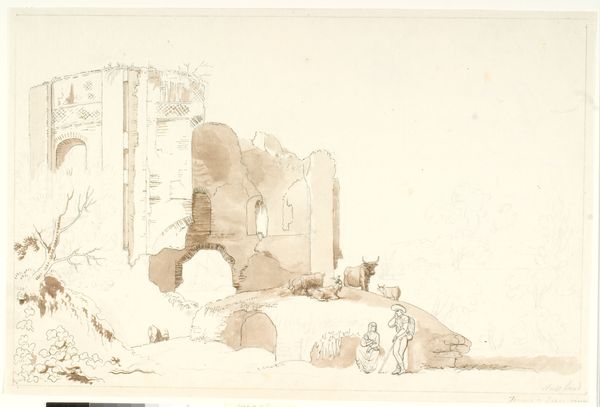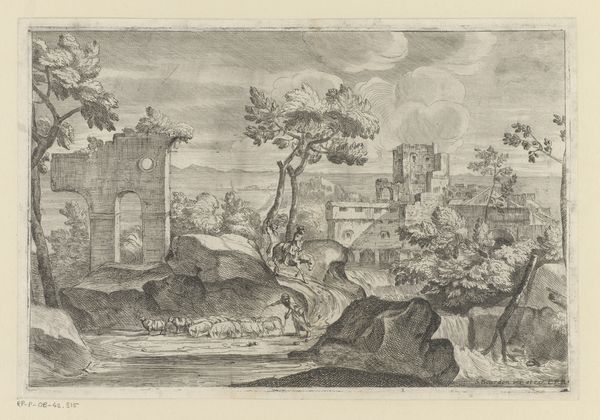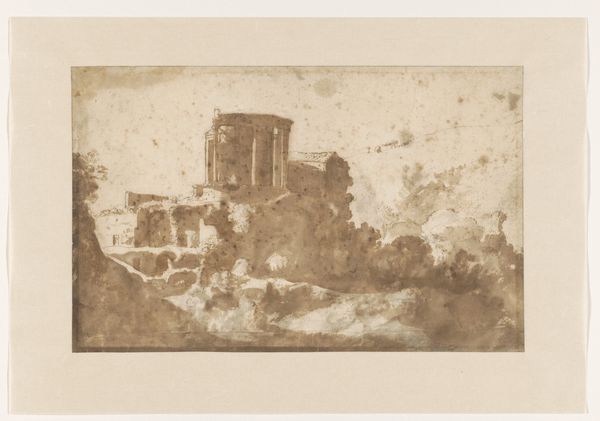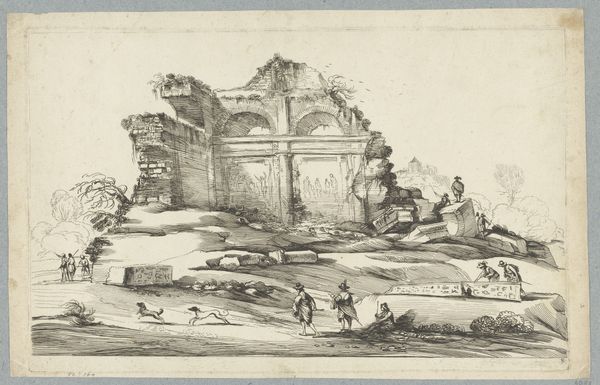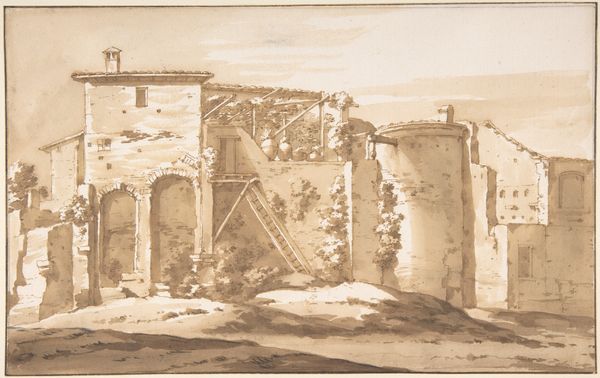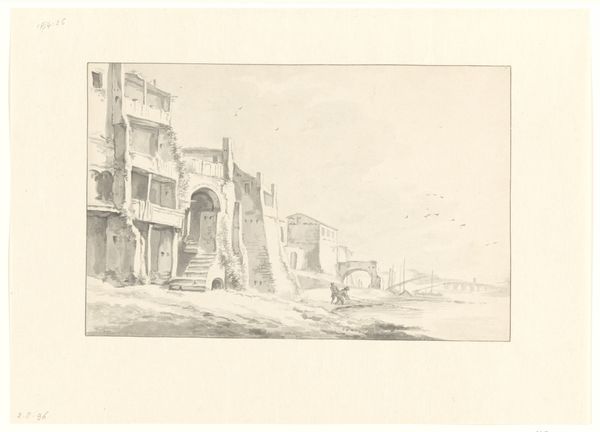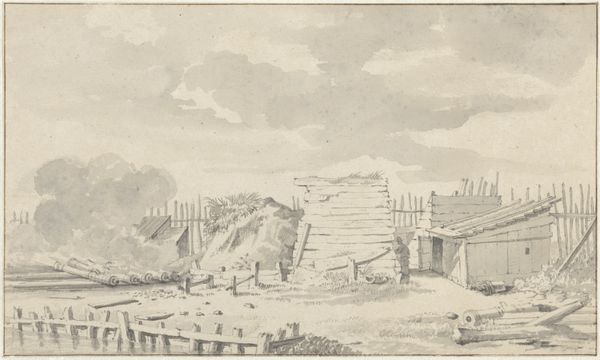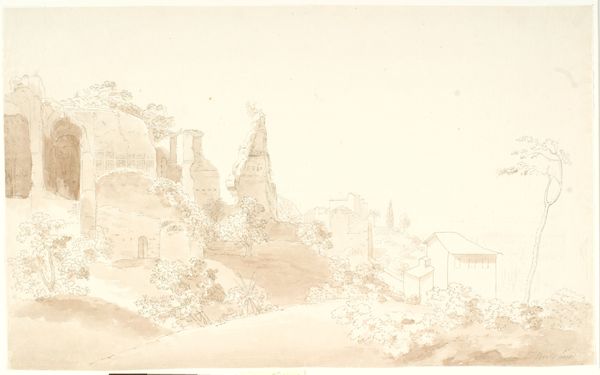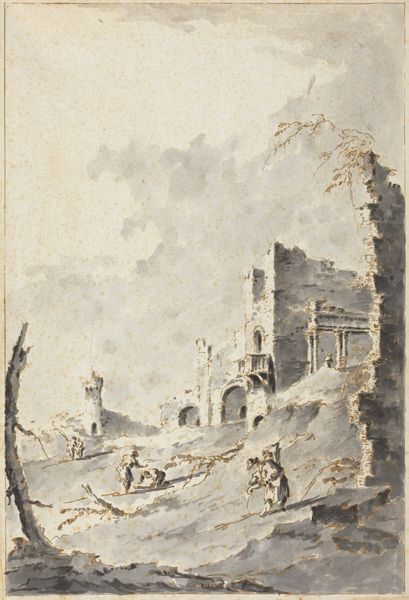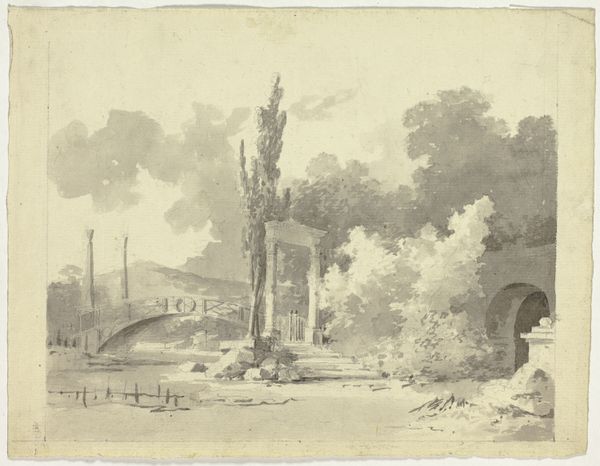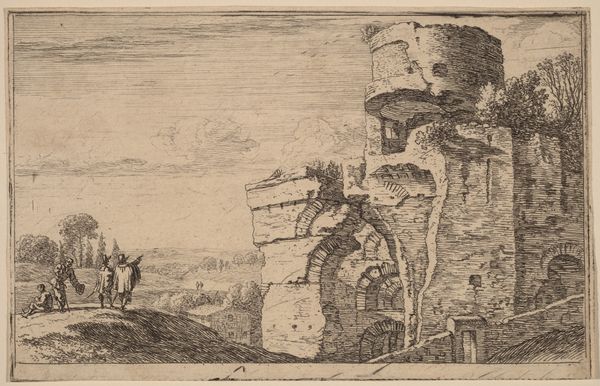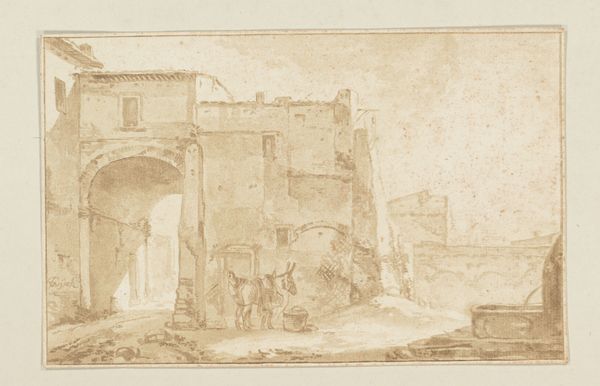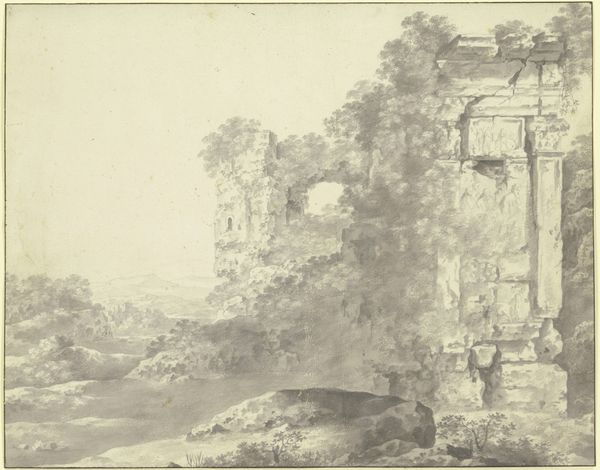
drawing, ink
#
drawing
#
landscape
#
ink
#
romanticism
#
history-painting
Dimensions: 278 mm (height) x 433 mm (width) (bladmaal)
Curator: This is Niels Gundersen Lund's "Ruins of the Temple of Apollo at Lake Avernus", created between 1789 and 1792. The work, currently held at the SMK - National Gallery of Denmark, employs ink in a drawing that fits the Romantic landscape tradition, gesturing to history painting. What do you make of it at first glance? Editor: Well, ruins always give me a touch of melancholy. There’s something profoundly beautiful, and undeniably sad, about structures returning to the earth, being slowly swallowed by nature. This sepia ink heightens that feeling of faded glory. Curator: Exactly. Lund created this piece during a time when the rediscovery of antiquity held significant weight. Archaeological discoveries at Herculaneum and Pompeii deeply influenced artistic vision, informing a lot about classical history to shape cultural and political identity. Artists reflected upon fallen empires as a lesson to contemporary audiences. Editor: Oh, totally. The way he frames those figures – tiny, almost incidental – beside those massive ruins is fantastic. The figures make it real—past grandeur with contemporary observation—we see it now, we touch it… the drawing offers its silent wisdom: Everything changes, man. Even our monuments. Curator: And it goes beyond mere memento mori. It prompts thoughts about societal structures, about the passage of power. Consider the ruined Temple of Apollo here. Apollo, a god of order, rationality, light... all now in decay. What implications might Lund be suggesting about his contemporary socio-political landscape? Editor: Hmmm. Well, maybe it's about letting go? You know, accepting the natural course. Like nature will do her thing, always. Maybe Lund suggests, subtly, that we shouldn't be too rigid with our constructs. Instead, we embrace some chaos to allow for growth and re-invention. You see the man, his dog… he isn’t reverent and sorrowful but curious… perhaps he’s hoping nature will yield some forgotten truth? Curator: A fascinating read. For me, I see this artwork functioning within a much broader European trend that reflected anxiety of historical instability. These weren't just pretty pictures of old stones. They held embedded arguments, political, philosophical, often challenging the viewer to consider their role in their world. Editor: Agreed. Art isn't just about recording the present but asking questions to tomorrow too, like: if all is ruin, what can we build again? Lund poses this dilemma rather exquisitely. Thanks for offering this perspective, really shifted the old melancholic reading to one with hope. Curator: Indeed, and thank you as well. I think we've just scratched the surface of how "Ruins of the Temple of Apollo at Lake Avernus" speaks across centuries to us, and the ideas it evokes, offering the possibility of looking beyond, and ahead.
Comments
No comments
Be the first to comment and join the conversation on the ultimate creative platform.
